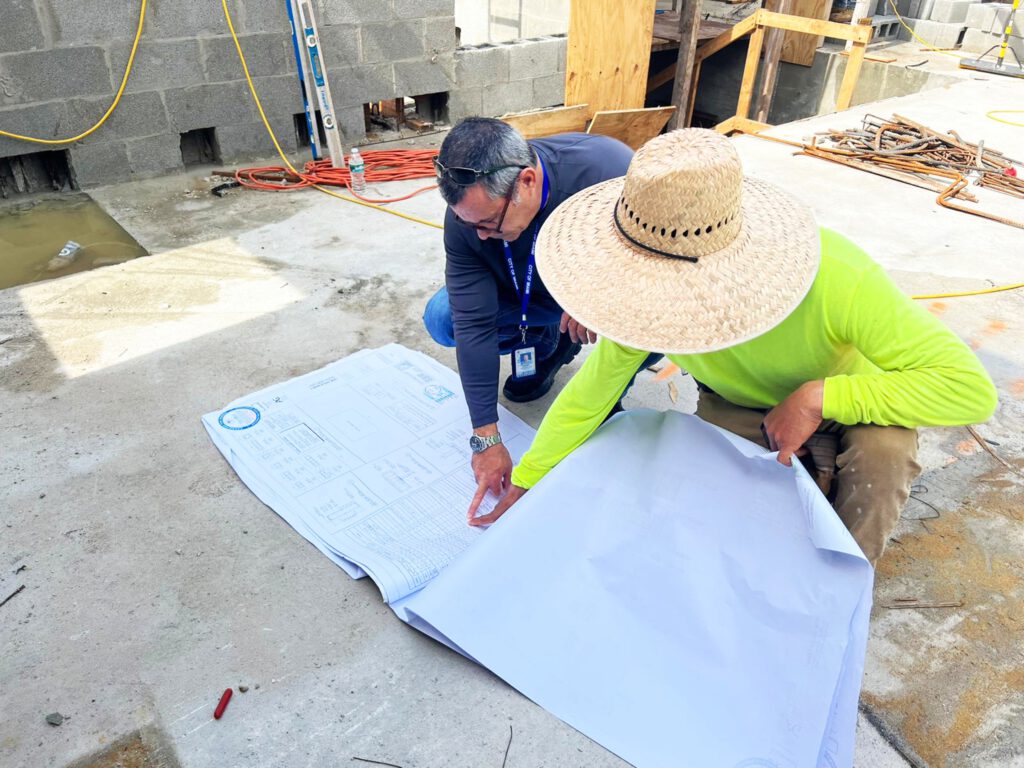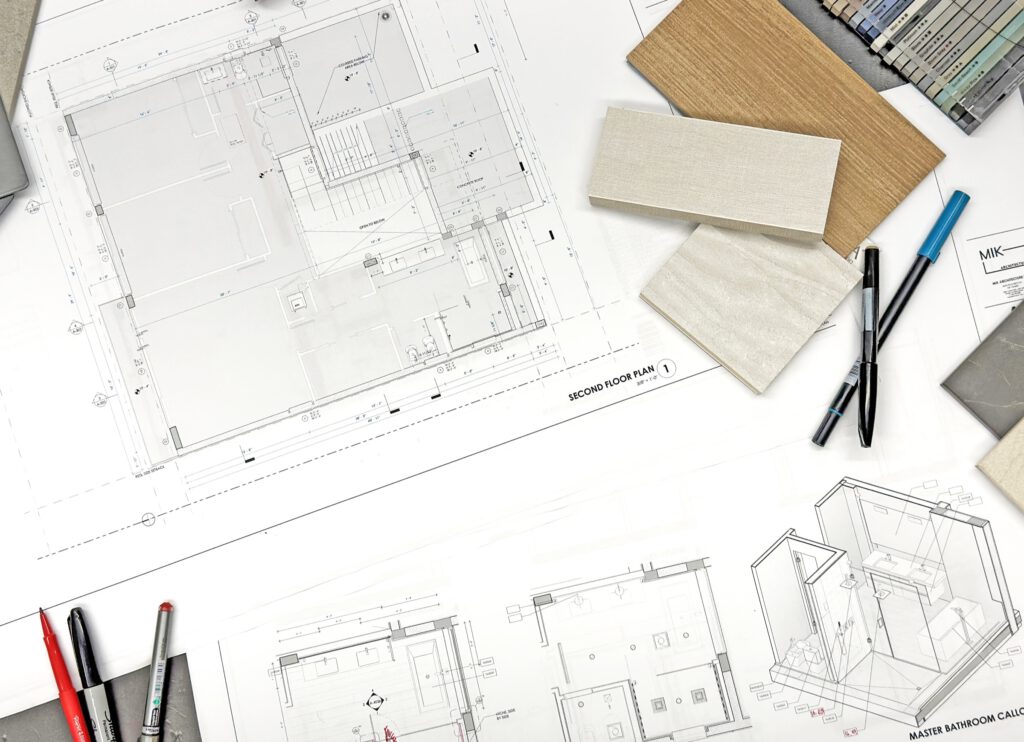
Finding a good architect is typically the first step in starting a building project. An architect creates accurate and carefully constructed drawings based on your vision and design ideas. They may also recommend improvements from their professional point of view, which will also be presented in the drawings upon your approval. Your architect's drawings will guide engineers and contractors as they construct the building. For this reason, understanding what Permit Sets are, versus Construction Sets and Shop Drawings is crucial to translate your dream into reality.
You may receive different quotations for drawings from your architects, which can be confusing. A drawing is a drawing, right? There are different types of drawings used in construction projects. Understanding what they are will help you determine which ones you need.
This article will cover permitting, construction, and shop drawing sets to help you understand your project's requirements and why you’re paying different rates for each.
A permit set refers to the bare minimum drawings required to obtain a construction permit from local authorities, which can still be extensive.
Each state and jurisdiction has its requirements, but the permit set typically includes the following:

While it still takes time to produce – due to the numerous coordination requirements between consultants and the architect – this set is still considered the basic skeleton or framework of the project. The Permit Set's sole purpose is to outline the essential details to provide authorities with sufficient information to determine whether the proposed project complies with applicable regulations.
Since this set doesn’t include any specifications or details beyond what is necessary for attaining a permit, it's the most affordable drawing set you can get for your project. However, it doesn't mean it will be the cheapest in the long run.
Although there is a prevalent misconception that permit sets are only meant to get official approval for a project, - in Florida - this set must be complete enough to build with them. Those with a tighter budget may opt to stay only with a permit set to lower architectural fees. However, whether you can use a permit set until the completion of the project depends on the type of structure or building and the competence of the contractors.
While building with a permit set has a lower initial investment, there is a caveat for those who wish to refrain from investing in a more detailed set of drawings. Since these drawings are so simple and pared down, you may have to be more actively involved in the building process. This could mean being involved weekly or even daily as the work progresses.
If you get lucky in choosing your contractor, you may get away with just bi-weekly check-ins. Just remember that you will have to trust them enough to leave most of the decision-making to them if that is the case.
Additionally, you will have to clearly communicate your ideas and expectations to the contractor without the assistance of industry jargon. Failing to clearly get your vision across would result in mistakes and unnecessary expenses.
A construction set of drawings is typically built upon the outline set forth in the permit set, with more details, enlarged views, and specifications. This comprehensive set contains most, if not all, the information necessary to obtain a permit and essentially build the structure without being actively involved.
As the name suggests, a construction set is the set of drawings that the builder or contractor will refer to during the construction process. It includes details such as:
The construction set helps lay the groundwork for the project and provides a clearly defined scope of work. It enables the builder set accurate cost estimates with relative ease.
Furthermore, it acts as a blueprint that the contractor can refer to. Using a construction set minimizes hands-on decision-making and active involvement from your end, as the granular details are already provided. The people in charge must follow the guidelines specified in the construction set to achieve the desired results.

Usually, a single project may require multiple contractors or teams to perform different tasks. This is where shop drawings come in. Shop drawings are developed by or on behalf of the contractor in charge of specific aspects of the project. These drawings are then submitted for approval and used as references during construction.
Each team or contractor will have their own shop drawing to refer to, which means that there could be multiple shop drawings in the build at any given time. These drawings are produced once the construction is underway and field conditions have been considered.
Shop drawing sets usually include Drawings of a specific area of the project with field dimensions, details regarding assembly and materials and other components required for that particular area.
Architects aren’t usually involved in creating shop drawings except when hired to review and approve the drawings for permitting or design intent.
Typically Shop Drawings should be provided for:
Additionally, shop drawings for specific components such as stairs, guardrails, and windows are a legal requirement and must be prepared and signed by an engineer. They may also require a separate permit process.
Based on what we've gone so far, you actually only have to choose between two sets of drawings: either only a Permit Set or include a full Construction Drawings Set. Shop Drawings are provided by your contractor or subcontractors either way.
As to which set you should opt for, you must look at these variables:

If you’re up for the challenge that comes with being more involved in the construction process, a permit set can be enough. However, be aware that changes during construction are more costly to address than during the design phase.
On the other hand, a construction set would be the right choice if you wish to have a more turnkey experience and enjoy your new project without dealing with the daily hassle and knowing what to expect before laying the first stone.
You should discuss your requirements and get a quote from your architect before deciding.
While you may be inclined to only consider the initial investment of the design fees when selecting what set to opt for, that can be a mistake in the long run. Even though the construction set has a higher upfront investment, it can be worthwhile.
Considering the average overall costs involved in building a house range from $100 to $500 per square foot, your final expense could vary significantly if the project is not thoroughly planned and coordinated in advance.
A permit set can be extremely vague compared to construction set drawings, as the latter provides more detail and - in a way - it forces early decisions.
When your contractor's only base is a permit set, you may face last-minute changes mid-build that could override your budget. Multiple mistakes can end up being more expensive in the long run. To avoid this, it is wise to opt for a construction set as it could minimize the number of changes during construction.
Ironing out the details in the design phase will reduce the likelihood of incurring additional costs due to these changes.
Whether you’re looking to build your dream home from scratch or simply looking at a major renovation, it’s essential to understand what to expect. Knowing what each drawing set means and what is included will help you make an informed decision.
